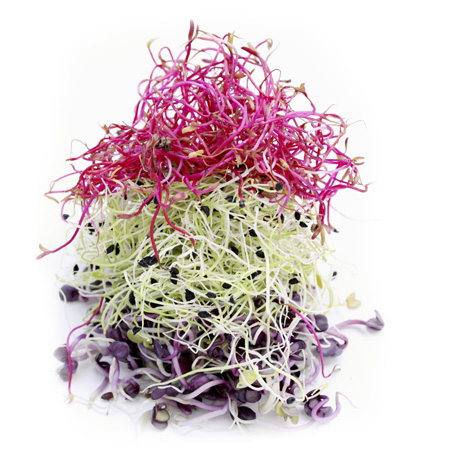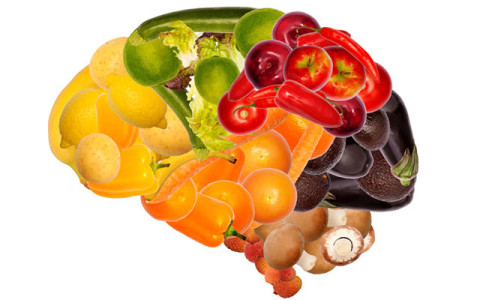Maintain a Healthy and Fit Brain
Our brains are more adaptive than we ever imagined. Neuroplasticity describes the amazing ability of our brains to reorganize and adapt itself to form new neural connections throughout life in response to interactions with our environment. Scientists have now shown that brain maps are adaptive and malleable and can be “re-wired” in response to environmental triggers so that one area can assume the function of another. Re-organizing of our brain maps though is not the only amazing brain super-power. Recent research has shown that certain areas of our brains poses the ability to regenerate throughout adult life. Neurogenesis, the regeneration of brain cells, plays a vital role in the recovery from brain injury. So how do we harness the possibilities of neuroplasticity and neurogenesis to maintain a healthy and fit brain function? The answer is largely in our reach. Through targeted lifestyle interventions we can indeed boost our brain health and fitness. Here is a ten step plan to get started.Exercise your Brain
If you don’t use it, you risk losing it! Brain exercise does not require however a membership in a “Brain Gym” or downloading the latest “Brain Game App”. Instead, you can challenge your brain often with novel and engaging activities. Learning to play a musical instrument, speak a new language or taking on a new hobby can provide ongoing learning and mental challenge. And change your environment. Traveling to new locations and exploring them- without relying on navigation tools to get around- can bolster cognition.Take Risks and Make Mistakes
Trying new things requires risk taking behaviour. The failures that arise from our own decisions to take risks can often provide better learning experiences than the successes. This is because of the powerful impact of negative feedback in our adaptive neural networking. If you want to know how to do something, trying it and doing it wrong a few times is often necessary to learn and retain the new knowledge. Indeed, we learn a lot from our mistakes. And it is always better to try and fail then to not have tried at all. As Wayne Gretzky has famously said, “You miss 100 percent of the shots you don’t take”.Practice Positivity and Action-oriented Thinking
Optimism works like a buffer to protect the brain from stress. On the other hand, ruminating, negativity and self-doubt can actually kill neurons and prevent the creation of new ones. A morning ritual of inscribing in a gratitude journal can help drive positive thinking, until optimism is more automatic and the brain can turn to action-oriented productive thoughts. When the brain thinks about action, the learning and networking that occurs nearly matches the mental memory laid down by performing the action. As the Canadian psychiatrist, scientist, and acclaimed author of “The Brain that Changes Itself”, Dr. Norman Doidge, has said; “imaging an act engages the same motor and sensory programs that are involved in doing it.” In other words, merely thinking about action is almost as good for your brain as doing it. So, to paraphrase Nike, is not always necessary to “Just do it” –sometimes we can “Just think about it!”Keep your Body active
Sitting is the new smoking. Beyond all the other health benefits of being active, exercise also enhances brain function and neurogenesis at any age. Moderate intensity aerobic activity like jogging or cycling, has been shown to boost concentration in school-aged children, improve cognitive performance and reduce the risk of dementia in adults. Exercising outdoors has the added benefit of providing a variable sensory experience. An outdoor run provides a changing terrain, scents, scene, and sounds and in this way is significantly more stimulating and brain boosting than a run of the same duration, intensity and caloric burn performed indoors on a treadmill.A Strong Frame is needed for a healthy Brain
Aerobic exercise, however is not enough. A healthy brain needs a fit and strong frame. As we age, the maintenance of healthy bones and muscle is highly linked with brain function. The frailty syndrome arises when osteoporosis, weakened and demineralized bone, is accompanied by sarcopenia, the loss of muscle bulk. Frailty in old age can increase the risk of cognitive impairment or dementia. However, by engaging in regular weight resistance exercises we can maintain a strong frame for a healthy brain as we age.Consume Superfoods for a Better Brain
While the brain accounts for only 2% of your body mass, it consumes 20% of our oxygen and nutrient intake. So is there a brain diet? It turns out that there are brain super foods that can effect mood, memory and brain performance. Early human brain development (encephalization) tracks closely to the development of a shore based diet rich in fish derived omega 3 fatty acids (notably DHA). In fact, it is thought that our early ancestors encephalization was made possible only when their diet evolved to one rich in DHA. In modern times, fish consumption tracks closely with cognition and mood. Comparative studies have shown that countries where there is little fish consumption face higher rates of depression than countries that have DHA-rich diets. Omega 3 (DHA) rich food sources include fatty fish (sardines, salmon), seeds (flax and chia), krill, and walnuts. Phytonutrients in berries (blueberries) and cruciferous vegetables (like kale) have anti-oxidant, anti-inflammatory brain boosting benefits. Brain active flavonoids like quercetin can be found in ginkgo leaves while other sources include cocoa, dark chocolate, and green tea. Coffee, like green tea, contains polyphenols and caffeine and has been shown to improve memory, mental performance, and protect against depression in women.
The MIND diet has been endorsed as a brain healthy diet that combines the Mediterranean diet with a reduced salt heart healthy DASH diet. The MIND diet has been shown to reduce the risk of Alzheimer’s disease.
Early human brain development (encephalization) tracks closely to the development of a shore based diet rich in fish derived omega 3 fatty acids (notably DHA). In fact, it is thought that our early ancestors encephalization was made possible only when their diet evolved to one rich in DHA. In modern times, fish consumption tracks closely with cognition and mood. Comparative studies have shown that countries where there is little fish consumption face higher rates of depression than countries that have DHA-rich diets. Omega 3 (DHA) rich food sources include fatty fish (sardines, salmon), seeds (flax and chia), krill, and walnuts. Phytonutrients in berries (blueberries) and cruciferous vegetables (like kale) have anti-oxidant, anti-inflammatory brain boosting benefits. Brain active flavonoids like quercetin can be found in ginkgo leaves while other sources include cocoa, dark chocolate, and green tea. Coffee, like green tea, contains polyphenols and caffeine and has been shown to improve memory, mental performance, and protect against depression in women.
The MIND diet has been endorsed as a brain healthy diet that combines the Mediterranean diet with a reduced salt heart healthy DASH diet. The MIND diet has been shown to reduce the risk of Alzheimer’s disease.






